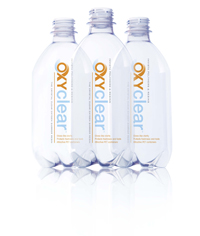In 2005, the R&D department of Comac Group developed new technologies for keg filling. The resulting HS6T keg lines include process plants like CIP systems and flash pasteurizers with nominal outputs up to 500 hl/h and provided with high quality components (APV, Alfa Laval, GEA Tuchenhagen).
Hygienic Design is a major criterion for a company’s competitiveness. Optimizing consumer protection is always the most important aim when implementing Hygienic Design. Another aspect concerns protecting the health of the workforce in production companies. From an economic perspective, Hygienic Design not only pays off because microbiological risks are eliminated, but also because it means machines and their components can be cleaned quickly and easily. Short cleaning cycles are directly reflected in longer production time and, ultimately, in the increased efficiency of plant engineering. This article gives examples of what successful Hygienic Design can look like in practice in beverage filling technology.
Husky Injection Molding Systems announced that it has formed a strategic supply agreement with Toyo Machinery and Metal Co., Ltd (Toyo). Under the terms of the agreement, Toyo will provide Husky with components and assemblies to be integrated into the new H-PET™ AE and H-MED™ AE systems that Husky will be launching at the K2010 tradeshow in Dusseldorf, Germany.
Invista, one of the world’s largest integrated polymers and fibers producers, has obtained regulatory clearance for OxyClear™ barrier resin for food and beverage packaging under the Federal Food, Drug, and Cosmetic Act and the European Union Packaging Directive for certain food types and processing conditions.
Australia currently ranks sixth among the world’s largest wine producers. Per-capita consumption is rising continuously, and Australian wine exports are going up significantly. More than 70 percent of the harvest is exported, mainly to the US and the UK, but also increasingly to non-English speaking countries. Some of the wine remaining on the Australian continent is packaged in bag-inboxes as “cask wine”, but many award-winning wines are also filled in glass bottles “down under”. The Rathbone Wine Group, headquartered in Melbourne, has installed a new bottling line, with the complete dry section including the control system supplied from Germany by Ziemann-BMS Maschinenfabrik.
Leveraging its strengths in innovation, in its assets and its operational excellence, the Invista European DMT and Polyester business is looking at each aspect of the business for further growth opportunities and improvements.
The Klöckner Pentaplast Group announced that it will add to its global production capacity for transverse-direction oriented shrink-label films. Primarily used for full- or partial-body shrink-sleeve applications, the new shrink film capacity will be located at the company’s Rayong, Thailand, and Rural Retreat, USA, manufacturing facilities. In addition, kp announced that it will be adding PVC production capacity to its Rayong, Thailand site. The company is investing 37 mio USD (27.4 mio EUR) for this expansion which includes two tentering lines and PVC production machinery. 64 employees will be added worldwide. Klöckner Pentaplast is the only shrink-label films and PVC producer with manufacturing sites located in the Americas, Asia, and Europe.
Regardless of the current economic crisis, the reality of the matter is that the German brewing industry has reaped the advantages of globalization. What’s more, some breweries have not only been able to compensate for the continuing drop in domestic sales but, in some cases, actually increase sales. Without doubt, globalization has also provided pportunities for some breweries to remain in business. In the pursuit of more affordable keg packaging, a number of disposable alternatives are now available. Here, Lightweight Containers BV, the Dutch marketing and sales subsidiary of KeyKeg, shares its experiences using the KeyKeg.
Bottle design is an essential element of a brewery’s brand presentation for consumers. Bottles of different shapes and colors with embossing and other decorative motifs have come into favor as a means of enhancing a brewery’s image and its brands. Furthermore, such bottles visually set a brand apart from its competitors’ brands and draw attention to the product on the store shelf. Both large and small breweries are choosing to highlight the individuality of their products with unique glass bottles.
Dimensioning of glass and PET returnables filling plants is oftentimes still based on a staging of individual units that are not output-adjustable or adjustable only in steps. With up-to-date control techniques, it is possible to have stepless demand-based control of all individual units in the wet




